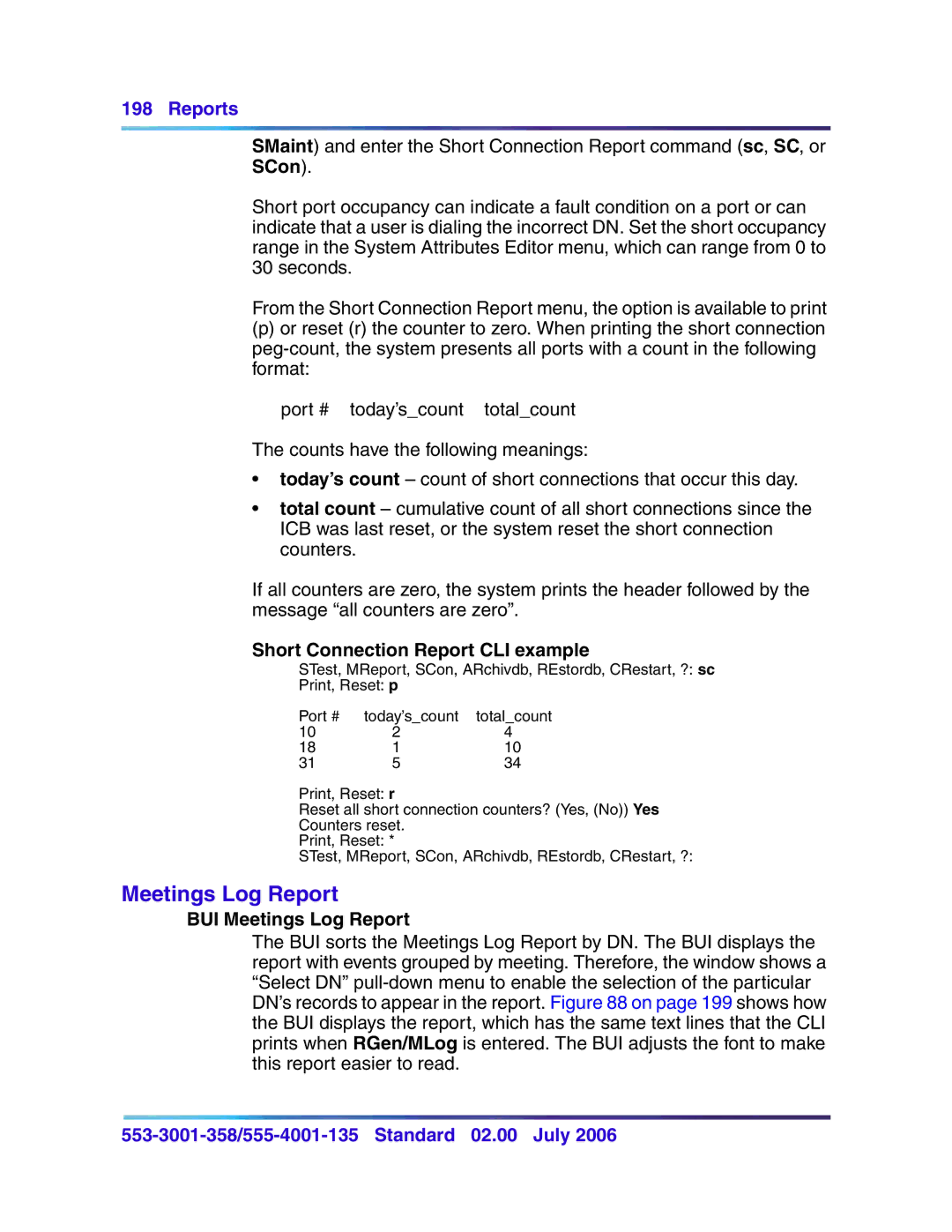
198 Reports
SMaint) and enter the Short Connection Report command (sc, SC, or SCon).
Short port occupancy can indicate a fault condition on a port or can indicate that a user is dialing the incorrect DN. Set the short occupancy range in the System Attributes Editor menu, which can range from 0 to 30 seconds.
From the Short Connection Report menu, the option is available to print
(p)or reset (r) the counter to zero. When printing the short connection
port # today’s_count total_count
The counts have the following meanings:
•today’s count – count of short connections that occur this day.
•total count – cumulative count of all short connections since the ICB was last reset, or the system reset the short connection counters.
If all counters are zero, the system prints the header followed by the message “all counters are zero”.
Short Connection Report CLI example
STest, MReport, SCon, ARchivdb, REstordb, CRestart, ?: sc
Print, Reset: p
Port # | today’s_count | total_count |
10 | 2 | 4 |
18 | 1 | 10 |
31 | 5 | 34 |
Print, Reset: r
Reset all short connection counters? (Yes, (No)) Yes
Counters reset.
Print, Reset: *
STest, MReport, SCon, ARchivdb, REstordb, CRestart, ?:
Meetings Log Report
BUI Meetings Log Report
The BUI sorts the Meetings Log Report by DN. The BUI displays the report with events grouped by meeting. Therefore, the window shows a “Select DN”
